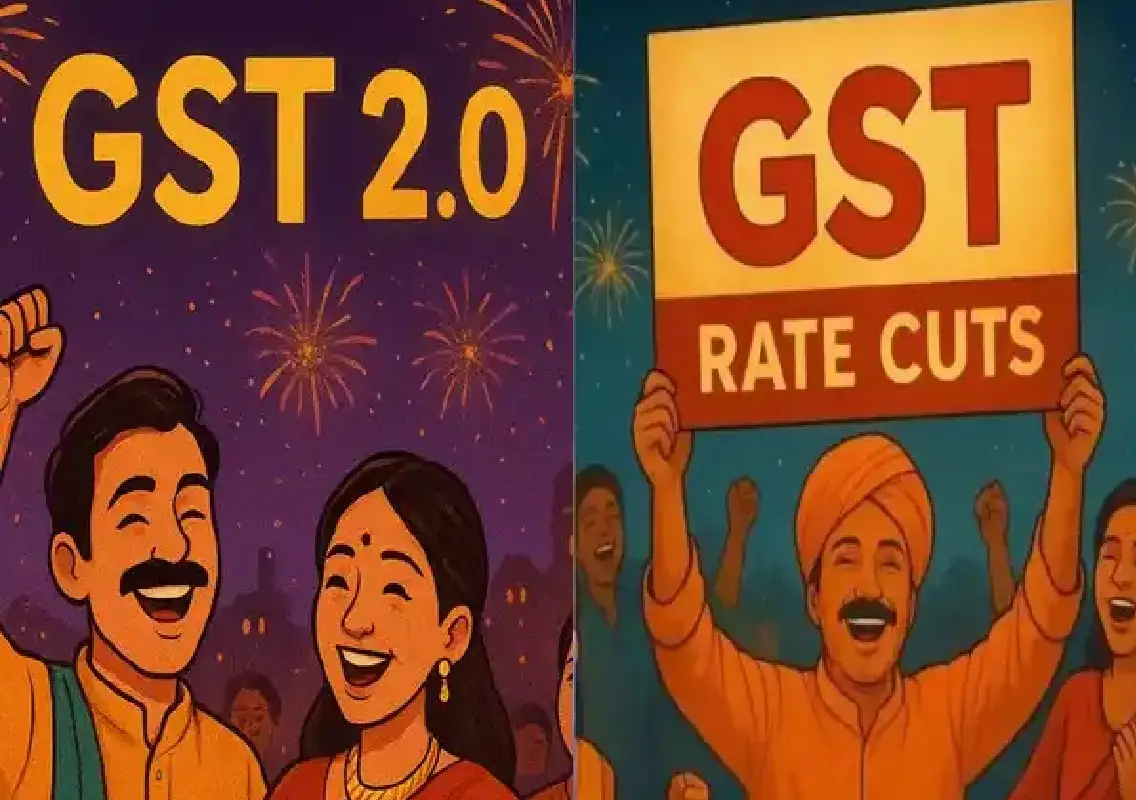By News Karnataka Editorial Team
Copyright newskarnataka

New Delhi: GST 2.0 comes into effect across India
India has launched GST 2.0, the largest overhaul of the Goods and Services Tax since its introduction in 2017. Effective September 22, 2025, the tax structure has been simplified from four slabs—5%, 12%, 18%, and 28%—to primarily two rates: 5% and 18%. This reform is aimed at reducing the financial burden on households while boosting consumption and economic growth.
Finance Minister Nirmala Sitharaman highlighted that the revised GST rates will make daily essentials, automobiles, electronics, insurance policies, appliances, stationery, and lifestyle services cheaper for consumers. Ultra-luxury items will now attract a 40% tax, while tobacco and related products remain at 28% plus cess.
Key changes in GST 2.0
The GST Council has categorised goods and services into simplified slabs for easier compliance and reduced costs:
Zero tax (essential items): Chapati, paranthas, ultra-high temperature milk, chena/paneer, pizza bread, pencils, sharpeners, crayons, exercise books, erasers, maps, charts, and globes.
5% tax (everyday essentials and services): Butter, ghee, dry fruits, sausages, cheese, jams, confectionery, biscuits, breakfast cereals, ice cream, coffee, fruit juices, plant-based or soya milk, toothpaste, toothbrushes, talcum powder, soaps, hair oil, kitchenware, umbrellas, bicycles, bamboo furniture, footwear, textiles, salons, spas, gyms, yoga centres, health clubs, small electric vehicles, and third-party goods vehicle insurance.
18% tax (standard goods and appliances): Air-conditioners, televisions, washing machines, refrigerators, dishwashers, motorcycles up to 350cc, small petrol/LPG/CNG vehicles, diesel vehicles up to 1500cc, and auto components.
40% tax: Ultra-luxury items.
Life and health insurance policies are now GST-free, while most medicines, medical devices, and diagnostic kits are taxed at 5% or remain exempt. Hotel rooms up to Rs 7,500 per night and economy flight tickets also fall under the 5% slab.
Automotive and electronics benefits
The GST rate cuts have significantly lowered prices for cars, bikes, and appliances.
Two-wheelers under 350cc: Hero Splendor, Honda Activa, Bajaj Pulsar, TVS Apache, and Royal Enfield Classic 350 are cheaper, with savings up to Rs 18,887 on CB350 bikes.
Small cars and auto components: Tax reduction from 28% to 18% lowers costs for models like Maruti Suzuki Alto, WagonR, Swift, Dzire, and Hyundai i20, among others.
Consumer electronics: Air-conditioners, TVs, dishwashers, and refrigerators see tax reduction from 28% to 18%, making them more affordable for middle-class households. Mobile phones remain at 18% GST.
Bajaj Auto and other manufacturers have confirmed that the benefits of reduced GST will be passed directly to consumers, with additional festive offers enhancing affordability.
Government engagement and consumer impact
Union ministers, including JP Nadda, Nirmala Sitharaman, and Ashwini Vaishnaw, visited markets in Delhi to gauge public and trader feedback. Traders expressed gratitude for the reduction in GST rates, noting immediate benefits for consumers.
Consumer Affairs Secretary Nidhi Khare warned firms against failing to pass on GST benefits, stating that such actions will be treated as “unfair practice” with strict enforcement.
Union ministers also highlighted broader economic benefits: increased disposable income, growth in tourism, and promotion of public transport through reduced bus ticket taxes from 28% to 18%.
Prime Minister Narendra Modi praised the rollout during Navratri, describing it as a “GST savings festival” and a step toward an Atmanirbhar Bharat, emphasising benefits for middle-class families, women, youngsters, and traders.
GST 2.0 marks a historic simplification and rationalisation of India’s indirect tax system. By reducing the tax burden on essentials, vehicles, electronics, healthcare, and lifestyle services, the reforms are expected to boost consumption, encourage savings, and stimulate economic growth ahead of the festive season.